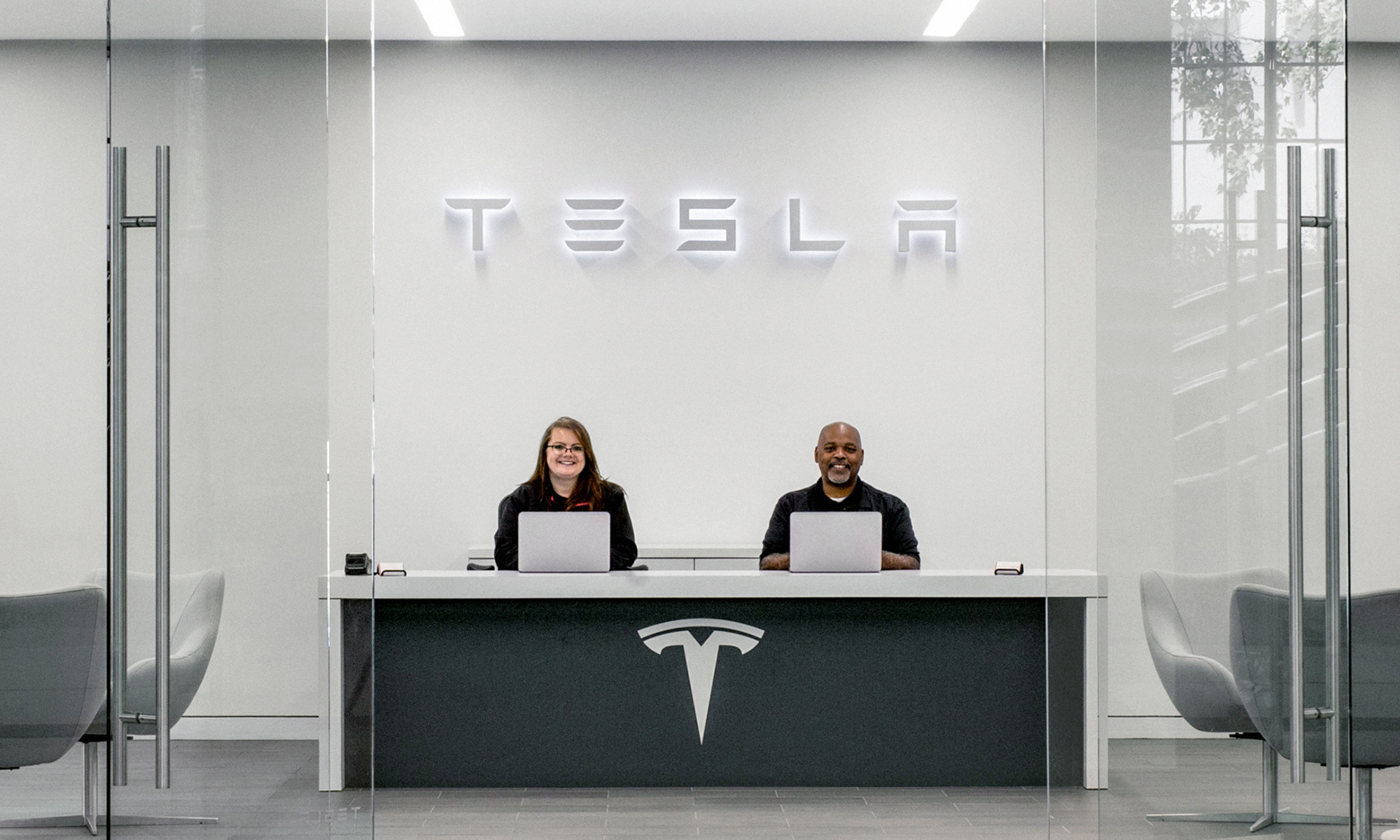Ninjas. Elves. Formula One crews. These are the things that come to mind when I try to describe my first experience with Tesla (TSLA +4.08%) service. Here's a revealing first-hand peek into how Tesla services its vehicles.

Tesla service truck returning a customer vehicle with its valet service. Image source: Author's photo.
According to Consumer Reports, Tesla Model S owners are highly satisfied. In fact, the 99 out of 100 owner-satisfaction score gathered from 600 owners is the highest the agency has seen in years. This is somewhat surprising in light of what seems to be a high level of maintenance and service appointments that Model S owners are experiencing. To be fair, much of the maintenance seems to be due to hyperactive proactivity and misdiagnosis as the company learns to properly diagnose problems unique to its electric cars. Still, as a young vehicle manufacturer, there is certainly room for quality control improvement.
So, why doesn't what seems to be a high maintenance profile for the Model S, as Tesla works out the kinks in its fast-growing production line, weigh on the owner-satisfaction score? Beyond ditching gas forever and the vehicle's beastly performance, the company's game-changing approach to vehicle maintenance that takes the headache away from service likely plays a key role.
The Tesla approach to service
Our goal with service is to be sort of invisible, Tesla CEO Elon Musk explained during the company's second-quarter earnings call. "It's like elves," Musk went on. "Like you don't even see it. It happens so fast."
Tesla has gone as far as actually bringing in people from Formula One to help with training its vehicle technicians.

Tesla service truck. Image source: Author's photo.
Tesla's service goes beyond the rapid repairs you would imagine from a service team trained by Forumula One technicians. The company has adopted a number of other customer-first approaches that are uncommon in the auto industry.
- A Tesla Ranger Visit: A technician visits the owner to perform maintenance and warranty repairs.
- Over-the-air updates: Like iOS and Android updates, Tesla can update the Tesla software and improve the vehicle without bringing it into the shop.
- Fully loaded loaner cars: When there is any inconvenience to the owner, Tesla will loan out a fully loaded Model S Performance vehicle.
- Valet service: Tesla owners can get their vehicle picked and replaced with a fully loaded loaner car so they don't have to drive to the service center.
Even after all this, Tesla has vowed that the company will never turn vehicle service into a profit center. "I have made it a principle within Tesla that we should never attempt to make servicing a profit center," Musk has said in a blog post. "It does not seem right to me that companies try to make a profit off customers when their product breaks."
Of course, the price tag for the Model S merits premium service -- but the company is bold to set the bar so high initially.
A 50-mile ranger visit for a map light
Several days into ownership, I realized the map light on the front passenger side worked, but only when all the cabin lights were turned on together -- not when you tried to press the light to turn on individually. Oddly enough, I was actually excited to see how Tesla would service my issue.
Having observed Tesla wade its way through the early days of quality control as it ramped up production as fast as lithium-ion supply and cash flow will enable it, I wasn't surprised to have a small issue with my vehicle upon delivery. But what was startling to see was Tesla's ninja-like response to my small issue.
Without me even making a ranger visit request, they suggested they drive 50 miles to my house for the repair at a convenient time when my wife and I didn't need the vehicle. A few days later, a technician showed up at my house, and repaired the light in my garage.

A Tesla technician fixes my map light in my garage, 50 miles from the nearest Tesla Service Center. Image source: Author's photo.
While the service was impressive, I can't help but ponder how Tesla can keep up such a high level of service as sales continue to grow -- especially when the lower-cost Model 3 is launched in 2017. But as Tesla continues to rapidly expand its service centers, Tesla hasn't hinted in any way that it plans on lowering its standards in the future.
If Tesla's claim that its electric cars will eventually have a far lower service profile than traditional vehicles is true, and it really does continue to rapidly expand its service centers, the company may really be able to continue to train and dispatch ninjas and elves. But Tesla will have to step up its quality control on map lights first.






